In ancient Egypt, symbolism played a vital role in religion, art, and daily life, where each Ancient Egypt Symbols carried profound meanings tied to the divine and the cosmos.
Egyptian symbols served as powerful tools of communication, reflecting the beliefs, spiritual values, and rituals of the time. They were not merely decorative elements but were imbued with significance, influencing everything from royal ceremonies to the journey of the soul in the afterlife.
The vast array of ancient Egyptian symbols—from the Ankh representing life to the Eye of Horus symbolizing protection—helped connect the physical and spiritual worlds.
These symbols were deeply intertwined with the Egyptian gods, the concept of eternity, and the cycle of life and death. Many of these sacred images were engraved in tombs, temples, amulets, and statues, offering protection, guidance, and divine favor.
Exploring the rich tapestry of symbols from ancient Egypt offers a window into the culture’s intricate relationship with the unseen world. Whether through the imagery of powerful gods or the timeless concept of eternal life, these symbols continue to fascinate and resonate with modern-day readers and travelers.
Book Your Trip To Egypt in 2025 and Get 10% OFF
Top 20 Ancient Egyptian Symbols and their meanings
Here’s a curated list of the Top 30 Ancient Egyptian Symbols and their meanings, showcasing the essence of Ancient Egyptian culture and beliefs:
1- The Ankh
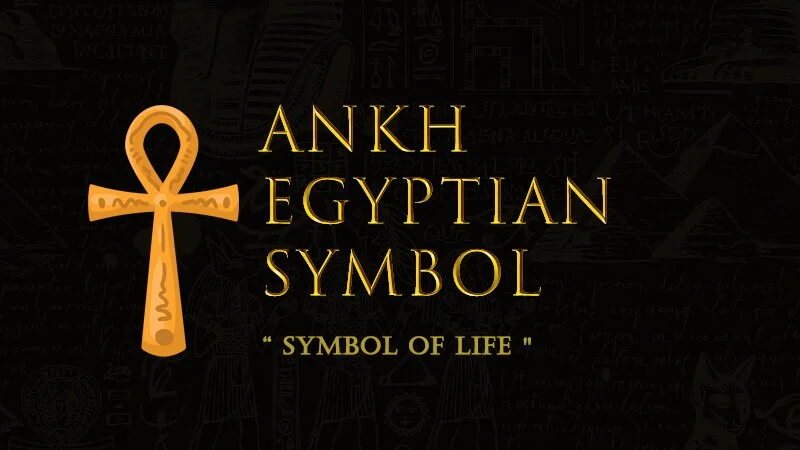
The Ankh (☥), often referred to as the "key of life" or the "Egyptian cross," is an ancient Egyptian hieroglyphic symbol that represents life and immortality. It is one of the most recognizable symbols of Ancient Egypt and carries deep cultural and spiritual significance.
Key Features:
Shape: The Ankh has a unique design resembling a cross with a loop at the top. This loop is often interpreted as representing eternity or the union of male and female principles.
Symbolism:
Life: The Ankh was a symbol of physical and eternal life. It was commonly used in tomb art, depicting gods and pharaohs offering the Ankh to humans, symbolizing the gift of life.
Union of Opposites: Some interpretations suggest that the Ankh represents the union of opposites, such as the masculine and feminine, or the earth and the heavens.
Fertility and Rebirth: Its association with water, air, and the sun connects it to renewal and the sustaining forces of life.
Historical Context:
Religious Usage: The Ankh was closely associated with Egyptian deities. Gods and goddesses are often depicted holding the Ankh, sometimes in combination with other symbols like the Was scepter (symbol of power) and the Djed pillar (symbol of stability).
Burial Practices: The Ankh frequently appeared in funerary art and objects, signifying the deceased's journey to eternal life.
Modern Relevance:
The Ankh remains a popular symbol in modern times, appearing in jewelry, tattoos, and art as a sign of life, spirituality, and African heritage.
It has also been adopted by various cultural and spiritual movements as a representation of life and holistic balance.
2- The Djed (Pillar of Stability)
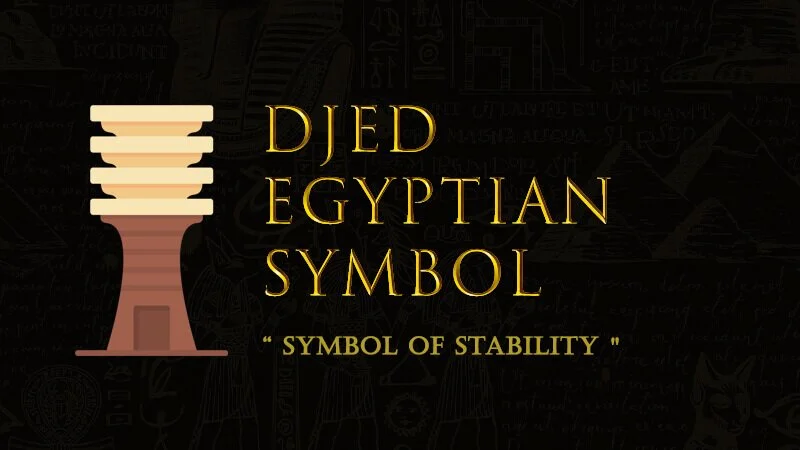
The Djed is an ancient Egyptian symbol representing stability, strength, and endurance.
Appearance: It resembles a column with four horizontal bars near the top.
Symbolism: Often associated with Osiris, the god of the afterlife, it is thought to represent his backbone and the enduring power of life after death.
Use in Rituals: The "Raising of the Djed" ceremony symbolized the restoration of order and resurrection.
Modern Connection: The Djed signifies resilience and the importance of a solid foundation in both physical and spiritual life.
3- The Was Scepter
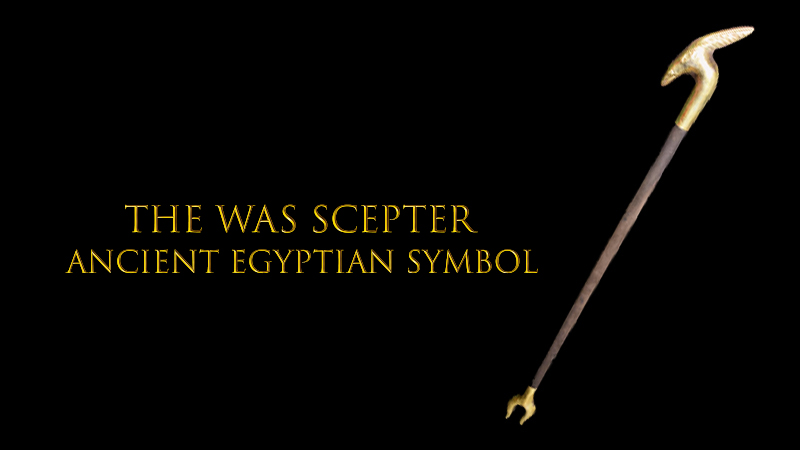
The Was scepter is a symbol of power, dominion, and authority.
Appearance: A long staff with a forked base and a stylized animal head at the top, often associated with Set or other gods.
Symbolism: It represents the divine authority of gods and kings and their ability to maintain cosmic order (Ma’at).
Depictions: Gods and pharaohs are often shown holding the Was scepter as a mark of their control over the natural and supernatural realms.
Practical Role: It was also a magical tool, believed to ward off evil and maintain balance.
4- The Scarab Beetle (Khepri)
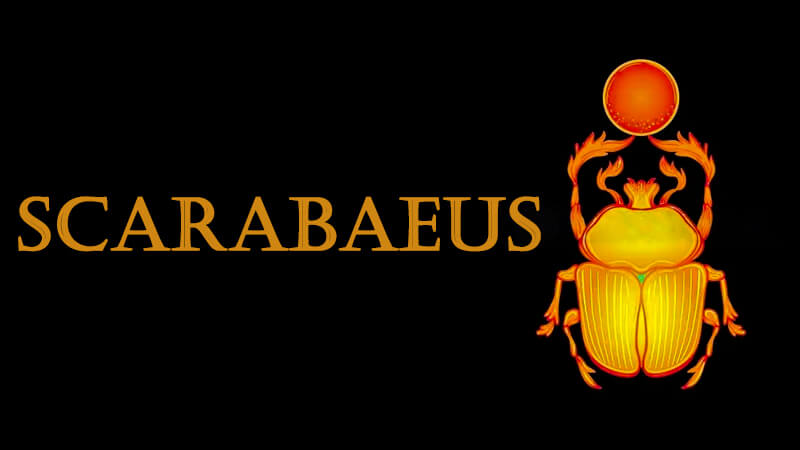
The scarab beetle is a sacred symbol of transformation, renewal, and creation.
Appearance: Modeled after the dung beetle, often depicted pushing a ball.
Symbolism: Linked to Khepri, the god of the rising sun, the scarab represents rebirth, as the beetle's activity was seen as analogous to the sun’s daily journey across the sky.
Amulets: Scarab amulets were popular as talismans, believed to bring protection and ensure the deceased's resurrection in the afterlife.
Wider Meaning: It embodies personal growth, perseverance, and the eternal cycle of life.
5- The Tyet (Knot of Isis)
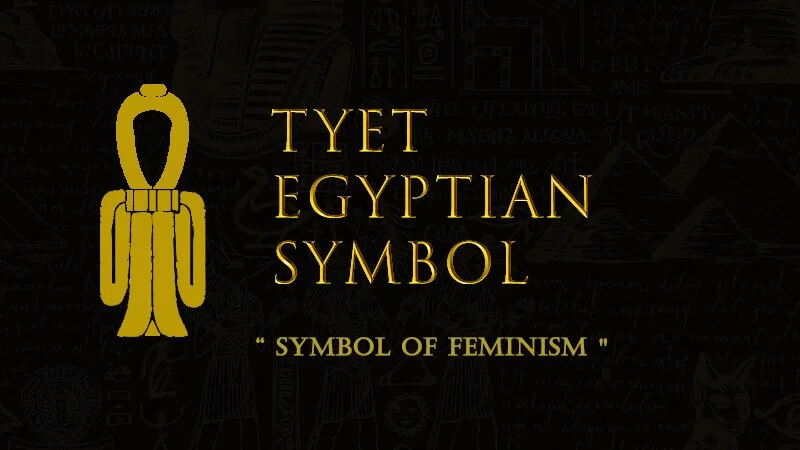
The Tyet, also known as the "Isis Knot" or "Blood of Isis," symbolizes protection, healing, and feminine power.
Appearance: Similar to an ankh, but with arms that curve downward, resembling a knot.
Symbolism: Connected to Isis, the goddess of magic and motherhood, it represents her protection and blessings.
Funerary Use: Often placed with the deceased to provide magical protection in the afterlife.
Material: Typically made of red stone or glass, symbolizing Isis's blood and life-giving power.
6- The Crook and Flail

The Crook and Flail are symbols of royalty and divine authority, often associated with the pharaoh.
Appearance: The crook is a shepherd's staff, and the flail consists of three strands, often interpreted as a whip.
Symbolism:
The Crook symbolizes the pharaoh's role as a shepherd guiding and protecting his people.
The Flail represents discipline and the authority to maintain order.
Depictions: Frequently seen crossed over the chest of statues or depictions of pharaohs, signifying their divine rule.
7- The Shen (Shen Ring)
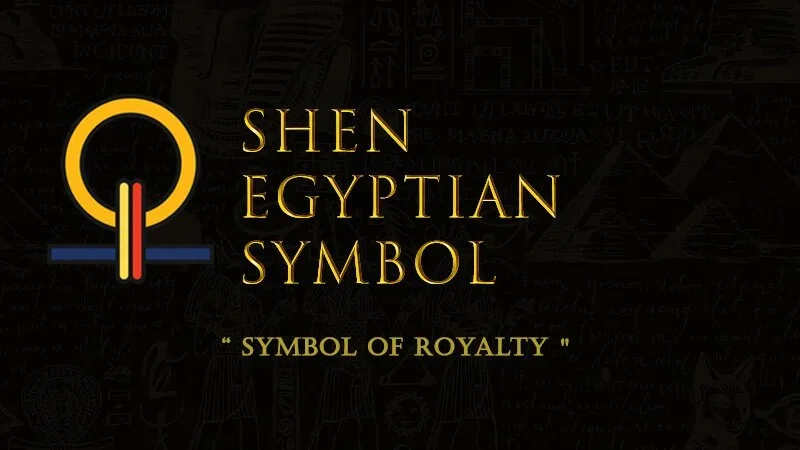
The Shen symbolizes eternity and protection.
Appearance: A looped rope in the shape of a circle, often with a horizontal line at the bottom.
Symbolism: Represents infinity and the eternal cycle of life.
Its enclosed shape symbolizes protection and completeness.
Depictions: Gods like Horus and Ra are often shown holding the Shen, offering its protection to the pharaoh.
8- The Eye of Horus (Wedjat)
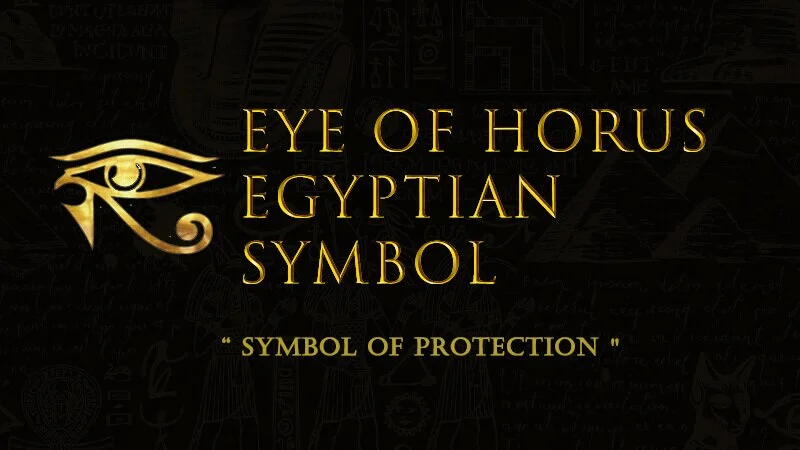
The Eye of Horus is a symbol of protection, health, and restoration.
Appearance: A stylized human eye with markings resembling a falcon.
Symbolism: Associated with the god Horus, who lost his eye in a battle but had it restored, the Eye symbolizes healing and wholeness.
It was also a symbol of protection against evil.
Amulets: Used as talismans to ensure safety and health.
9- The Eye of Ra
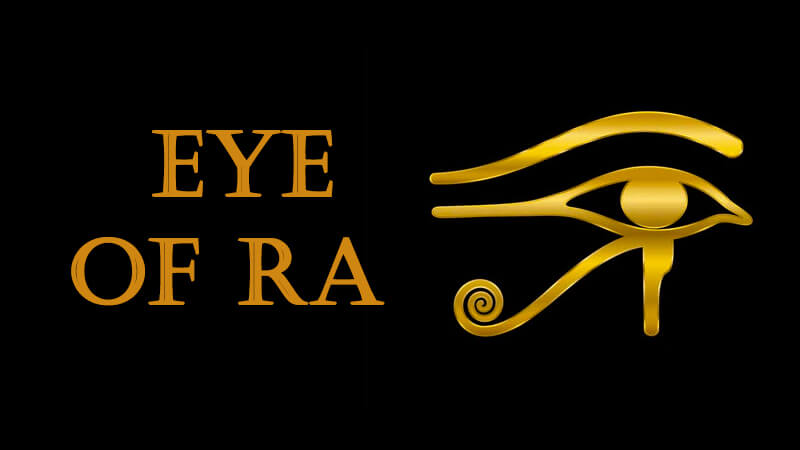
The Eye of Ra represents power, destruction, and protection.
Appearance: Similar to the Eye of Horus but associated with the sun and often depicted as fiery.
Symbolism: Represents Ra’s fierce protective force, capable of destroying his enemies.
It is also seen as a symbol of divine wrath and vigilance.
Depictions: Often personified as a goddess, such as Sekhmet or Hathor, who embodies Ra’s protective and destructive aspects.
10- The Sesen (Lotus Flower)
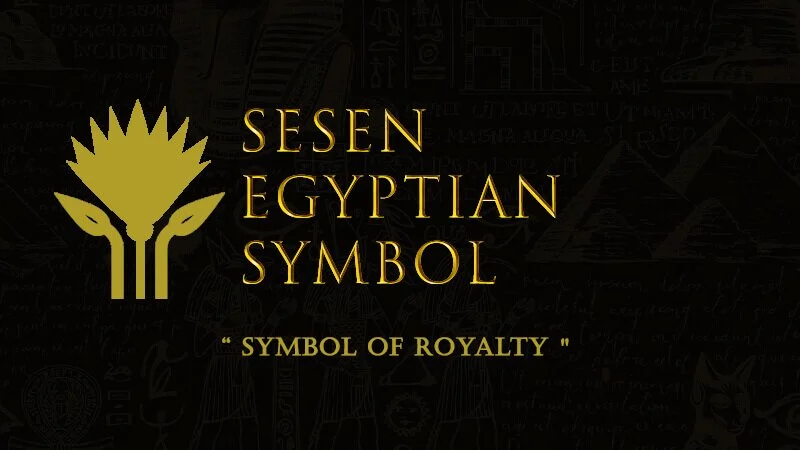
The lotus flower is a symbol of rebirth, creation, and purity.
Appearance: A flowering lotus with petals fully opened.
Symbolism: Associated with the sun, as the lotus opens at sunrise and closes at night, symbolizing renewal.
Represents purity rising from the chaos of the Nile’s muddy waters.
Religious Role: Linked to creation myths and often seen in artwork associated with gods and the afterlife.
11- The Ben-Ben

The Ben-Ben is a symbol of creation, renewal, and the primeval mound of life.
Appearance: A pyramidal shape, often depicted as a stone or pillar.
Symbolism: Represents the primordial mound from which creation emerged in Egyptian mythology.
Associated with the sun god Ra and the idea of cosmic order.
Architectural Influence: Inspired the design of pyramids and obelisks, serving as points of spiritual focus.
12- Ka (Ancient Egyptian Symbol)
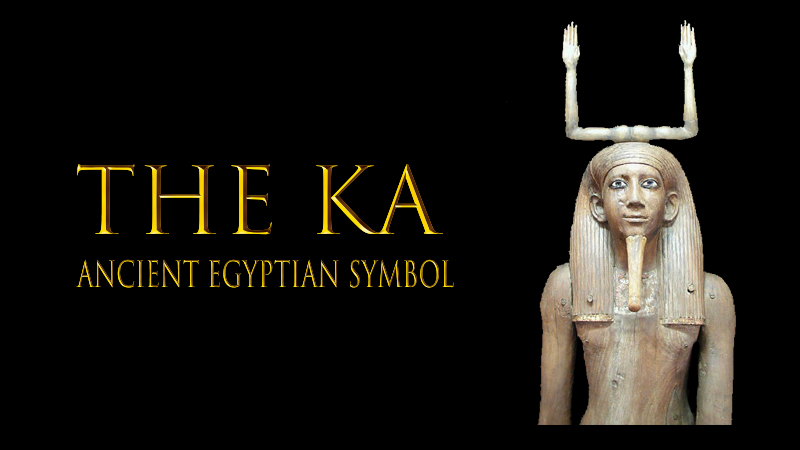
The Ka represents the life force or spiritual essence of an individual.
Appearance: Typically depicted as two raised arms.
Symbolism: The Ka is the spiritual double of a person, representing their vitality and life energy.
It was believed to continue existing after death, requiring sustenance through offerings.
Religious Belief: Ensuring the Ka’s well-being was central to Egyptian funerary practices.
13- Ba (Ancient Egyptian Symbol)
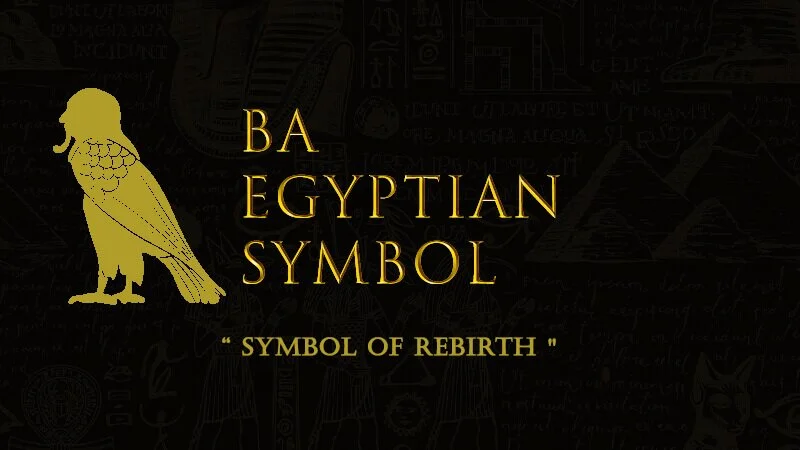
The Ba symbolizes the soul and its ability to move between the physical and spiritual realms.
Appearance: Represented as a bird with a human head.
Symbolism: The Ba embodies a person’s individuality and personality.
It was believed to leave the body after death, traveling between the living world and the afterlife.
Role in Afterlife: The Ba had to reunite with the Ka to ensure eternal life.
14- Feather of Ma'at
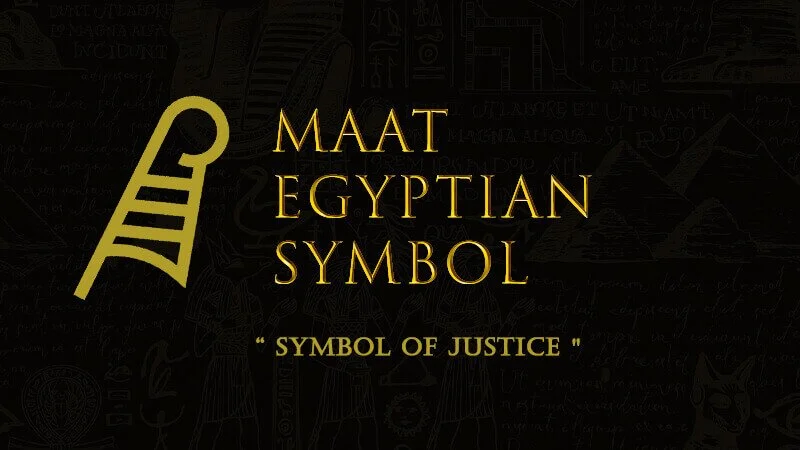
The Feather of Ma’at symbolizes truth, justice, and order.
Appearance: A simple ostrich feather.
Symbolism: Associated with Ma’at, the goddess of truth and cosmic balance.
Represents the principles of harmony and order essential to both life and the universe.
Role in the Afterlife: In the "Weighing of the Heart" ceremony, the deceased’s heart was weighed against the Feather of Ma’at to determine their worthiness for the afterlife.
15- Deshret (Red Crown of Lower Egypt)
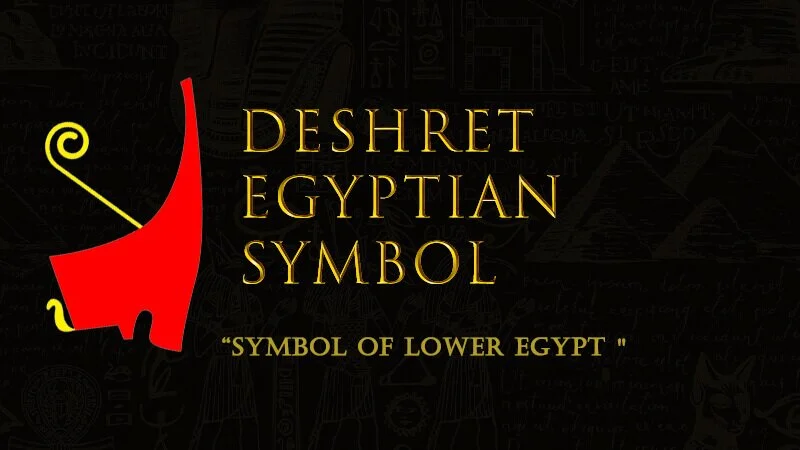
The Deshret represents Lower Egypt (the northern region, including the Nile Delta).
Appearance: A red, flat-topped crown with an upward curling projection in the front.
Symbolism: Signifies the ruler’s authority over Lower Egypt.
Represents the fertile lands of the delta.
Depictions: Often worn by pharaohs or gods when symbolizing dominion over the northern kingdom.
16- Hedjet (White Crown of Upper Egypt)
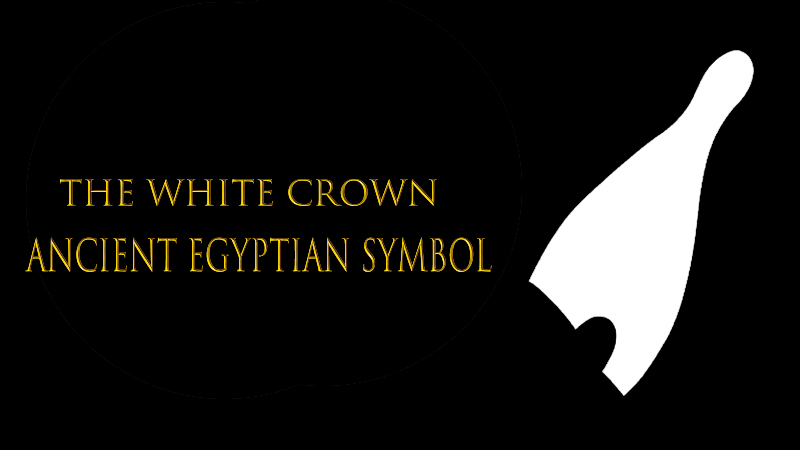
The Hedjet represents Upper Egypt (the southern region, including Thebes and the Nile Valley).
Appearance: A tall, conical white crown.
Symbolism: Signifies the ruler’s control over Upper Egypt.
Associated with the arid highlands and valleys.
Depictions: Seen on pharaohs or gods like Nekhbet, who symbolized Upper Egypt.
17- Pschent (Double Crown of Egypt)
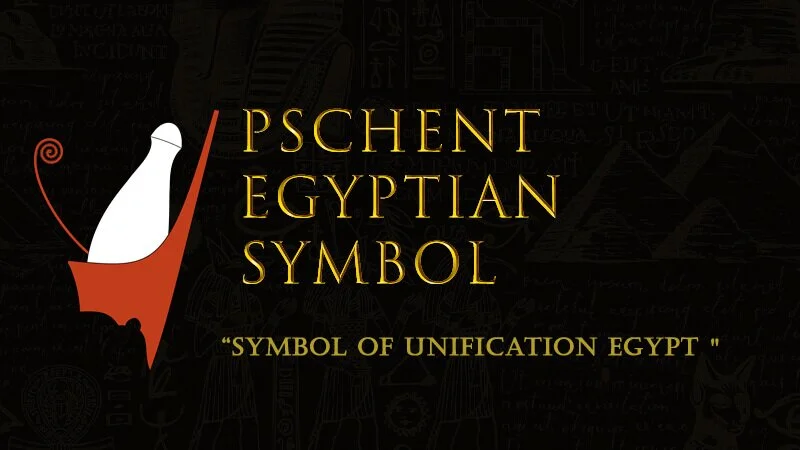
The Pschent is the Double Crown, symbolizing the unification of Upper and Lower Egypt.
Appearance: A combination of the Deshret (Red Crown) and Hedjet (White Crown).
Symbolism: Represents the pharaoh’s rule over a unified Egypt.
A symbol of power and the duality of the kingdom’s regions.
Depictions: Frequently worn by pharaohs in art, signifying their supreme authority.
18- Tree of Life
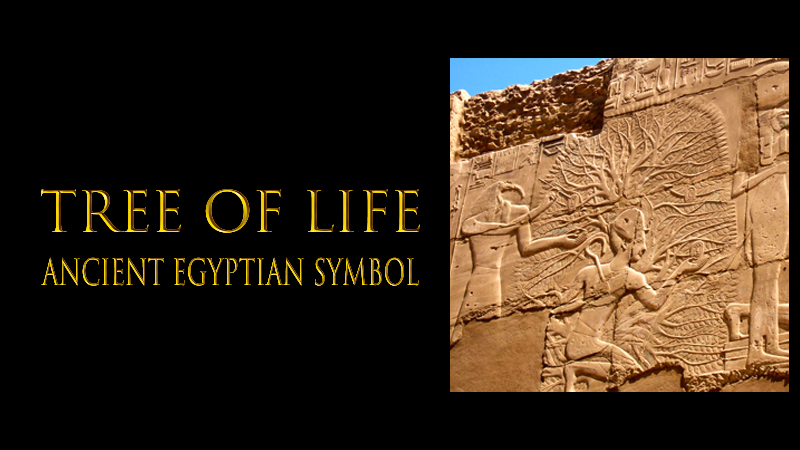
The Tree of Life symbolizes creation, sustenance, and divine connection.
Appearance: Often depicted as a sacred tree with offerings or inscriptions on its branches.
Symbolism: Represents the divine order and the connection between the heavens, earth, and the underworld.
Associated with gods like Hathor and Osiris, who were believed to nourish life through the tree.
Religious Role: Often depicted in tombs and temples, symbolizing eternal life and divine blessings.
19- Winged Sun Disc
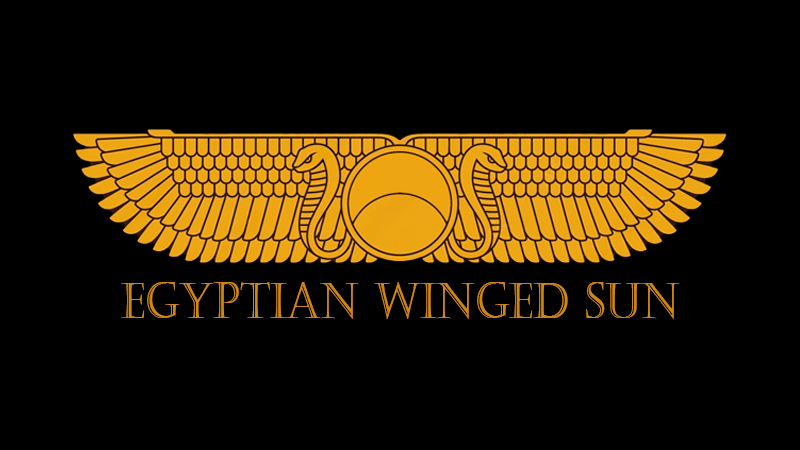
The Winged Sun Disc is a symbol of protection, royalty, and the divine sun.
Appearance: A golden sun disk flanked by outstretched wings, sometimes accompanied by cobras.
Symbolism: Represents the sun god Ra and his protective and life-giving power.
The wings symbolize divine protection over the pharaoh and the land of Egypt.
Use: Often placed above temple entrances and sacred spaces to ward off evil and invoke divine favor.
20- Seba (Star Symbol)

The Seba is the star symbol in Ancient Egyptian culture, representing guidance, learning, and divine knowledge.
Appearance: A five-pointed star or a star with multiple rays.
Symbolism: Connected to the concept of the stars as eternal guides in the heavens.
Represents learning, discipline, and the mysteries of the cosmos.
Use in Texts: Often found in temple inscriptions and astronomical texts, symbolizing navigation and divine influence.
21- Ajet (Horizon Symbol)
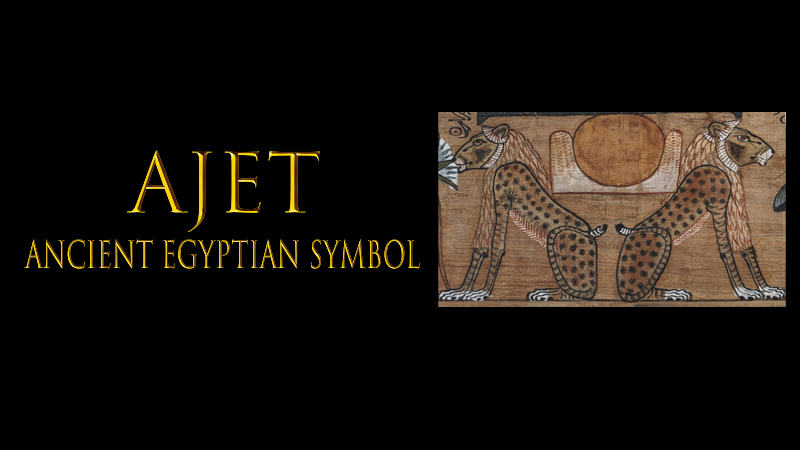
The Ajet symbolizes the horizon and the concept of rebirth and transition.
Appearance: A depiction of the sun rising between two mountains, often flanked by ankhs or other symbols.
Symbolism: Represents the point where the sun rises, symbolizing renewal and the daily cycle of life.
Connected to the god Ra and the eternal journey of the sun.
Religious Role: Often depicted in tombs, signifying the passage to the afterlife.
22- Amenta (Land of the Dead Symbol)
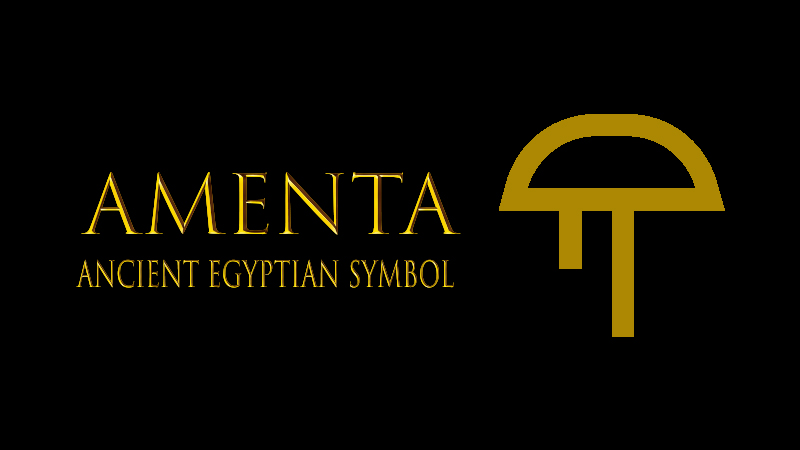
The Amenta symbolizes the Land of the Dead or the Underworld.
Appearance: A representation of the horizon with a half-circle above it.
Symbolism: Represents the west, where the sun sets and where the deceased were believed to enter the afterlife.
Signifies the eternal rest and the realm of Osiris.
Depictions: Common in funerary texts and art, marking the journey of the soul to the afterlife.
23- Blue Crown (Khepresh)
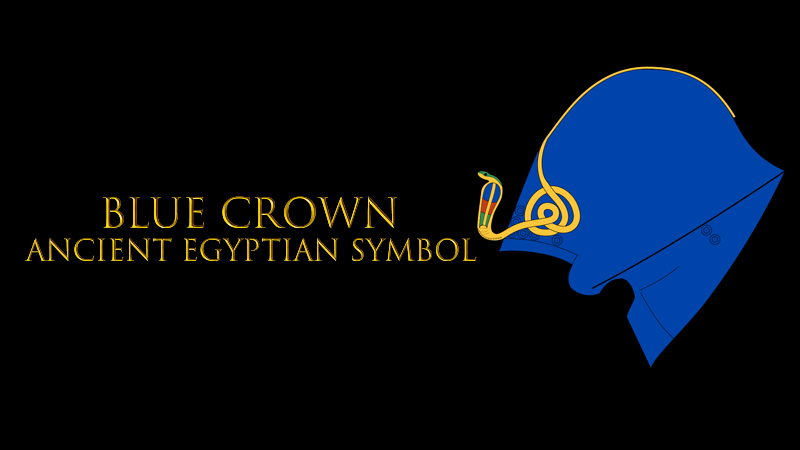
The Blue Crown (Khepresh) symbolizes war, victory, and pharaonic power during battle.
Appearance: A rounded blue helmet-like crown often decorated with golden discs.
Symbolism:
Worn by pharaohs during military campaigns to emphasize their role as warriors.
Represents victory and divine support in conflicts.
Depictions: Frequently seen in images of the pharaoh leading armies or performing rituals of conquest.
24- Canopic Jar
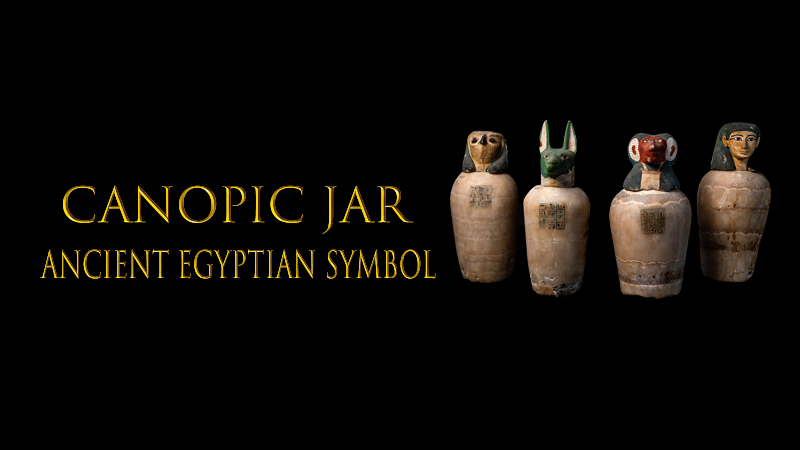
The Canopic Jar symbolizes protection and preservation in the mummification process.
Appearance: A set of jars, each with a lid shaped like one of the Four Sons of Horus.
Symbolism: Each jar protected a specific organ removed during mummification:
Imsety (Human head): Protected the liver.
Hapi (Baboon head): Protected the lungs.
Duamutef (Jackal head): Protected the stomach.
Qebehsenuef (Falcon head): Protected the intestines.
Represented the care and preparation needed for eternal life.
Religious Use: Essential in funerary practices to ensure the deceased’s body was ready for resurrection.
25- Menet (Menat Necklace)
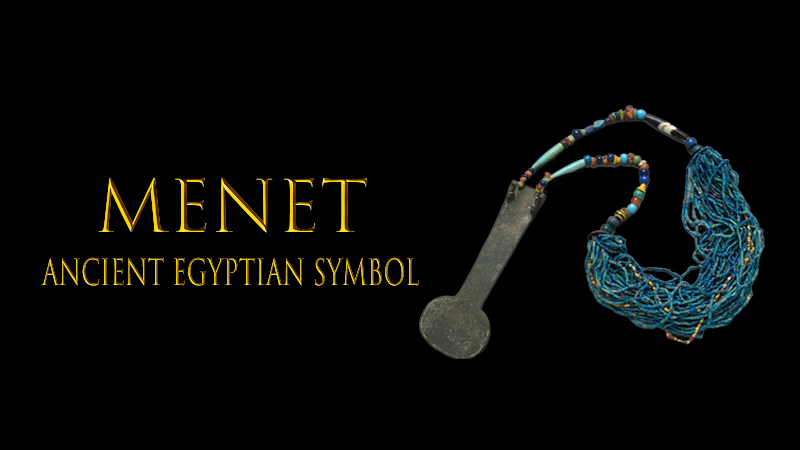
The Menet symbolizes fertility, protection, and divine favor.
Appearance: A necklace with a counterweight at the back, often associated with Hathor.
Symbolism: Represents blessings of fertility, music, and joy.
Also used in rituals to invoke protection and ensure prosperity.
Religious Role: Priests or priestesses of Hathor often carried it in ceremonies.
26- Ouroboros (Symbol of Infinity)
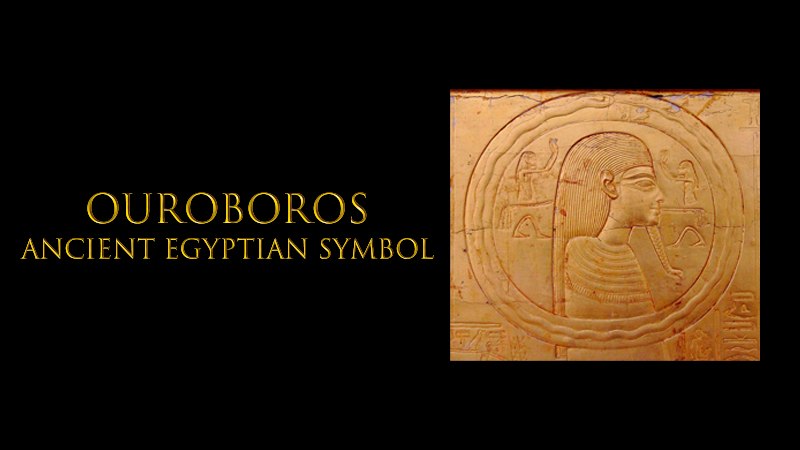
The Ouroboros is a symbol of eternity, cyclical time, and renewal.
Appearance: A serpent or dragon eating its own tail, forming a circle.
Symbolism: Represents the eternal cycle of life, death, and rebirth.
Symbolizes the concept of unity and the interconnectedness of all things.
Use in Egypt: First appeared in Ancient Egypt as a representation of the infinite cycle of the cosmos and the protective aspect of the universe.
27- Bennu Bird (Symbol of Rebirth)
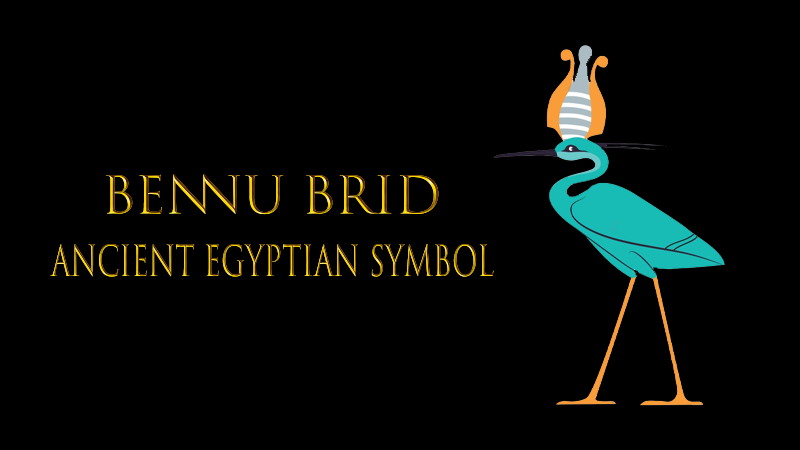
The Bennu bird is a symbol of rebirth, creation, and eternal life.
Appearance: Often depicted as a heron or a bird resembling a phoenix.
Symbolism: Linked to the sun god Ra and the concept of creation.
Represents the cyclical nature of life, much like the sun’s daily journey.
Mythology: Said to have played a role in the creation of the world, the Bennu bird was associated with the Ben-Ben stone as a manifestation of Ra’s power.
28- The Crescent (Symbol of the Moon, Motherhood & Fertility)
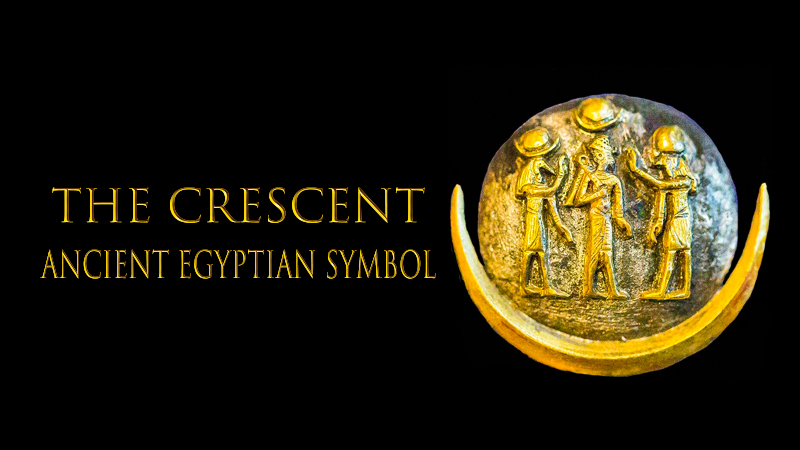
The Crescent symbolizes femininity, motherhood, and fertility.
Appearance: A crescent-shaped moon, often depicted with goddesses.
Symbolism: Associated with the goddess Isis and other lunar deities.
Represents the nurturing and life-giving qualities of the moon.
Cultural Role: Connected to the cycles of life and fertility, aligning with the rhythms of nature and women’s roles as caregivers and creators.
29- The Uraeus (Cobra Symbol)
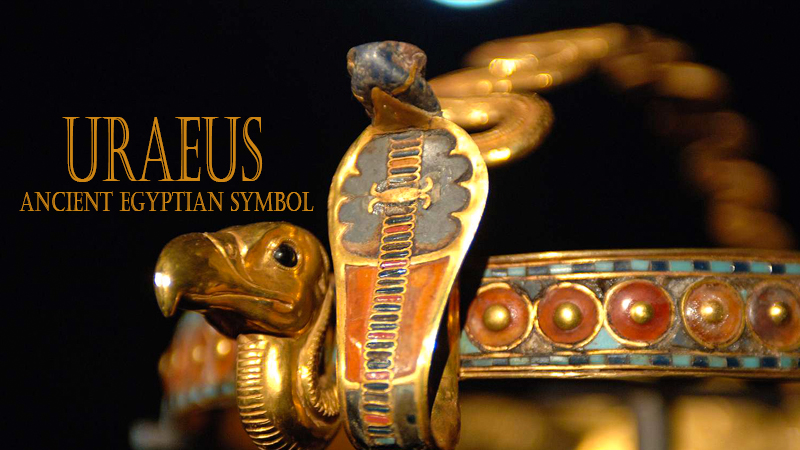
The Uraeus is a symbol of protection, royalty, and divine authority.
Appearance: A rearing cobra, often worn on the pharaoh’s crown or headdress.
Symbolism: Represents the goddess Wadjet, the protective deity of Lower Egypt.
Associated with divine authority and the ability to ward off enemies.
Depictions: Seen on the crowns of gods and pharaohs, signifying their divine power and protection.
Curious about how much does a trip to Egypt cost? Discover the rich history of Ancient Egypt symbols while enjoying a journey that combines cultural exploration with a well-priced, unforgettable adventure.
Other Egyptian Symbols
30- The Lotus (Sesen) Symbol
Meaning: Purity, creation, rebirth, and spiritual awakening.
Appearance: A flower with a prominent central bud, often shown open or in bloom.
Symbolism: The lotus flower rises from the muddy waters of the Nile and blooms at sunrise, symbolizing the sun, rebirth, and renewal.
Associated with the sun god Ra and creation myths, representing life emerging from chaos.
Religious Role: Frequently used in art and architecture, symbolizing divine birth and the cycles of life.
Linked to deities like Nefertum, the god of perfumes, and Hathor.
31- Cartouche (Shenu)
Meaning: Royal identity and protection.
Appearance: An oval shape enclosing hieroglyphs, often with a horizontal line at the base.
Symbolism: Encircles the names of pharaohs to highlight their divine authority and protection.
Represents eternity and ensures the preservation of the king’s name in history.
Use in Hieroglyphs: Appears on monuments, tombs, and artifacts to signify the names of royalty.
32- Egyptian Sistrum
Meaning: Joy, music, and divine protection.
Appearance: A handheld percussion instrument with a looped frame and movable rods or disks.
Symbolism: Connected to Hathor, the goddess of music, love, and fertility.
Used in religious ceremonies to invoke divine blessings and ward off evil.
Religious Role: Priests and priestesses played the sistrum during rituals to create sacred sounds pleasing to the gods.
33- Nemyss (Royal Headdress)
Meaning: Royalty, power, and protection.
Appearance: A striped cloth headdress that drapes over the shoulders, often with a cobra (uraeus) at the front.
Symbolism: Represents the pharaoh’s divine authority and connection to the gods.
The stripes symbolize order and balance, reflecting the pharaoh’s role in maintaining Ma’at (cosmic harmony).
Depictions: Worn by kings and sometimes queens in statues and reliefs, showcasing their sacred status.
34 - Obelisk
Meaning: Sun worship, strength, and stability.
Appearance: A tall, four-sided pillar tapering to a pyramidion (pointed top) often gilded to reflect sunlight.
Symbolism: Represents a ray of the sun and the connection between earth and the heavens.
Dedicated to the sun god Ra, symbolizing his eternal power.
Use in Architecture: Positioned in temple complexes to honor Ra and mark sacred spaces.
The largest surviving obelisks still stand as testaments to Egyptian engineering and devotion.
Symbol | Meaning | Significance |
|---|
Ankh | Life, protection, faith, energy, light | Associated with the goddess Isis, commonly found in tombs and temples, representing life, fertility, and transformation. |
Eye of Horus | Protection and health | Symbolized healing and protection, often worn as an amulet to ward off evil and offer safety. |
Eye of Ra | Sun, power, and authority | Represented the sun’s power, connected to Ra, the sun god, and symbolized divine strength. |
Ouroboros | Cycle of life and rebirth | Depicted as a snake eating its tail, symbolizing the eternal cycle of life, death, and rebirth. |
Amenta | Land of the Dead | Represented the underworld or afterlife in Egyptian mythology, connected to the journey of the soul. |
Scarab Symbol | Transformation and resurrection | Represented resurrection, renewal, and protection, frequently used in amulets and jewelry. |
Djed Pillar | Strength and stability | Symbolized the backbone of Osiris, representing stability, endurance, and the foundation of life. |
Tyet Symbol | Feminism and protection | Associated with the goddess Isis, linked to life, protection, and feminine power. |
Symbol of Ka | Soul and spiritual essence | Represented the vital force or spiritual essence of an individual in ancient Egyptian beliefs. |
Ba Symbol | Physical soul and rebirth | Depicted the personality or spirit, believed to travel between the living world and the afterlife. |
Feather of Maat | Justice, truth, and morality | Symbolized the concept of balance and truth, used to weigh the souls of the deceased in the afterlife. |
Deshret Symbol | Lower Egypt and authority | Represented the Red Crown of Lower Egypt, symbolizing control and power over this region. |
Hedjet Symbol | Upper Egypt and sovereignty | Represented the White Crown of Upper Egypt, symbolizing rule and authority in the region. |
Pschent Symbol | Unity of Egypt | Combined the Red Crown (Deshret) and White Crown (Hedjet), symbolizing the unification of Upper and Lower Egypt. |
Shen Symbol | Eternity and divine protection | A circular symbol representing eternity and protection, often associated with gods and goddesses. |
Uraeus | Power and divine authority | Depicted as a cobra, symbolizing sovereignty, royalty, and divine power, especially for gods and pharaohs. |
Seba | Stars, gods, or constellations | Represented stars and guided the deceased toward the afterlife, symbolizing divine creation and guidance. |
Hekha and Nekhakha | Power of kingship | Represented the crook and flail, symbols of leadership, authority, and royal power used by the kings of Egypt. |
Menat | Prosperity, fertility, and fortune | Worn as a necklace, associated with joy, fertility, and good fortune, often connected to Hathor, the goddess of love and music. |
Was Scepter | Divine rule and control | Symbolized divine authority and control over chaos, often held by gods and pharaohs to represent their power. |
Primordial Hill | Creation and origin | Represented the first mound of land that emerged from the waters of chaos, where the god Atum created life. |
Khepresh | Ceremonial and military power | A blue crown worn by pharaohs during battle or ceremonies, symbolizing military power and divine protection. |
Tree of Life | Destiny and eternal life | Represented knowledge, enlightenment, and the eternal cycle of life, often associated with the gods’ wisdom and creation. |
Ieb | Heart and emotions | Symbolized the heart, considered the center of intellect, emotion, and willpower in ancient Egyptian beliefs. |
Akhet | Horizon and cycle of life | Represented the horizon where the sun rises or sets, symbolizing the cycle of life, death, and rebirth. |
Atef | Divine authority of Osiris | A crown worn by Osiris, symbolizing his divine authority over the afterlife and the dead. |
Canopic Jars | Mummification and protection | Used in the mummification process to store the internal organs of the deceased, protecting them in the afterlife. |
Sesen | Rebirth and creation | Represented the lotus flower, symbolizing the sun, rebirth, and creation, often used in association with the god Ra. |
Sistrum | Music, joy, and divine harmony | A musical instrument connected to Hathor, symbolizing joy, good fortune, and the harmonious order of the universe. |
Winged Sun | Solar power and eternity | Symbolized the sun’s power and eternal protection, often placed above temple entrances to offer divine protection. |

